Guppies are popular tropical aquarium fish that many aquarists love to keep. These brightly colored livebearers are fun to watch, super easy to breed, and relatively straightforward to care for, making them a great choice for beginners.
But are guppies aggressive? And can guppies live in a community tank?
Guppies are generally peaceful fish that can do well in a community setup. However, there are some occasions when these swimming jewels can be a tad belligerent toward their own kind and other tank mates.
Read this guide to learn more about typical guppy behavior, how to deal with guppy aggression, and what steps you can take to ensure peace and harmony in your community tank.
Are Guppies Aggressive?
There are a few occasions when these usually sociable fish can show aggressive behavior. But before you can deal with that, you need to understand more about what defines guppy aggression.
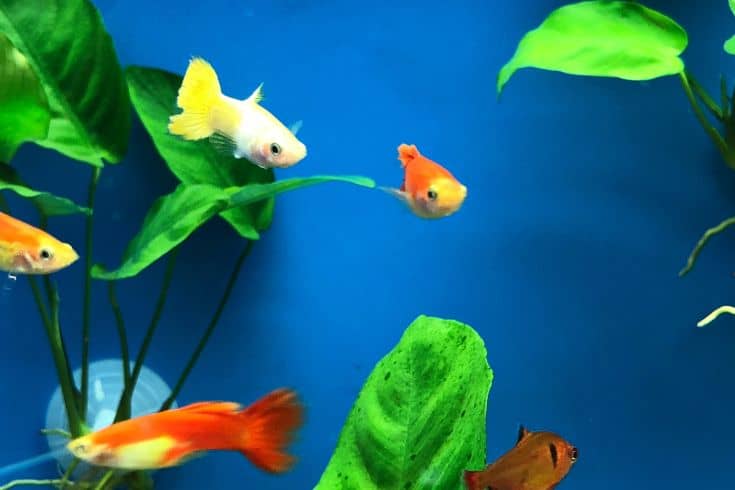
What’s The Definition Of Aggressive Behavior?
Aggressive behavior can be defined as when an animal threatens another with the intention to intimidate or dominate them.
In the case of guppies, there are many forms of aggression, most of which have different triggers.
Different Types Of Aggression In Guppies
Guppy aggression can take the form of constant chasing and nipping of other fish or could involve more severe biting and fin shredding.
What Causes Aggression in Guppies?
Now you know what aggression in guppies looks like, let’s take a closer look at what causes the behavior.
Tank Mates
These non-aggressive fish don’t generally bother too much with compatible tank mates, being content to spend their time mixing with their own kind and exploring their surroundings.
However, sometimes when you add new fish to an existing setup, squabbles involving male guppies can break out. That behavior generally settles down after a few days, and ongoing bullying is pretty rare.
Sex Ratio
Although male guppies are the ones with the most vibrant colors and fancy finnage, don’t be tempted to house lots of males and only a couple of females.
As mentioned earlier, guppies are prolific breeders, and if you have the wrong female-to-male ratio, the females will be harassed and pursued relentlessly. In fact, sometimes injuries can occur, and the female fish become so stressed that their life expectancy is dramatically shortened.
In my previous experience, that’s quite normal behavior in guppies, so as a rule of thumb, I recommend keeping two or even three female guppies for every male. That way, the girls won’t be pestered quite as much.
Size of the Tank
Guppies are active swimmers that need plenty of space to move around in. If the tank is too small and the fish are overcrowded, squabbles can break out, especially at feeding times.
Water Parameters and Quality
If your tank is not properly maintained, the water quality will suffer. Poor water quality leads to increased stress levels, which compromises the fish’s immune system, leading to disease outbreaks.
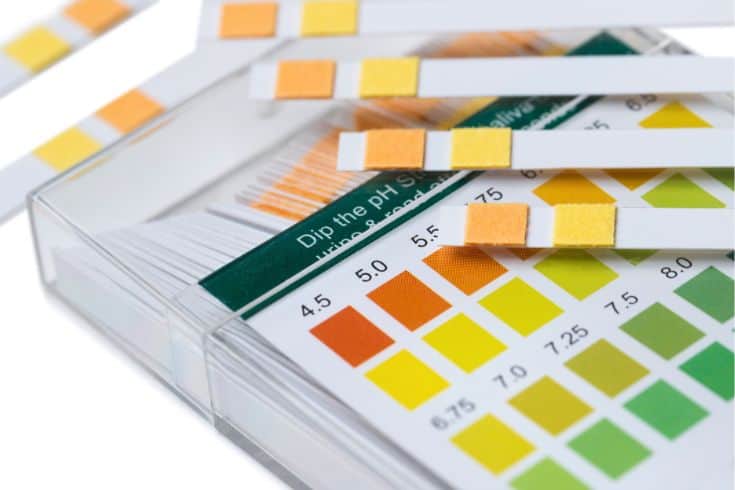
Similarly, if the water chemistry is incorrect, the guppies will quickly become stressed out. The levels of ammonia and nitrites should be zero, while nitrates can be around 20 ppm or less.
Live many species of livebearers; fancy guppies prefer pH levels of 7.0 or greater. These are tropical fish that need a warm water temperature of between 72° and 82°F.
Eating Habits
Feeding all your fish a correct, high-quality diet is essential if they are to remain healthy and thriving and is critical in guppy care.
Wild guppies eat a variety of foods, including tiny invertebrates, zooplankton, plant matter, and algae. You can replicate that to some extent in the captive environment by giving your fish a combination of commercially prepared tropical fish flake food supplemented by frozen meaty foods, such as bloodworms, daphnia, brine shrimp, and the like.
Provided there’s plenty of food for everyone, your fish should be peaceful and content. However, if you don’t offer your guppies plenty of food to go around, fights can break out as every fish tries to get enough to eat.

Ideally, you should feed your fish twice a day, once in the morning and again in the evening, before you turn the tank lights out. To avoid overfeeding, offer the fish only what they can clear in around two minutes.
Sick Fish
Sometimes, if a fish is sick or diseased, other fish might bully it, presumably because the sick fish presents a risk to the others in the shoal.
In that case, it’s best to remove the fish to a quarantine tank and treat it, returning it to the main tank once the disease has gone.
Number of Guppies in the Tank
Overcrowding causes stress, leading to fights, nipping, and generally poor health.
So, how many guppies can you have in your tank?
- In a 10-gallon tank, you can keep 5 to 6 guppies.
- In a 20-gallon aquarium, you can have 8 to 10 guppies.
- A 30-gallon tank is big enough to accommodate 15 adult guppies.
When stocking your aquarium, remember that guppies breed, so their numbers will quickly increase exponentially, which can lead to overstocking if you’re not careful.
Of course, if you want to keep other species of fish, you’ll need a more spacious aquarium.
Spawning Behavior
Guppy courtship is often mistaken for aggression, with males chasing females relentlessly around the tank, often in groups.
Injuries sometimes occur if the female fish are pushed around too much, and the whole experience can be extremely stressful.
Signs Of Aggression In Guppies
So, how do you recognize aggression in guppy fish?
There are a few telltale signs of aggression and belligerence in guppies that you must know to enable you to fix any problems before they become too serious.
Harassment
As previously mentioned, guppy courtship behavior entails male fish chasing females around the tank until mating has taken place.
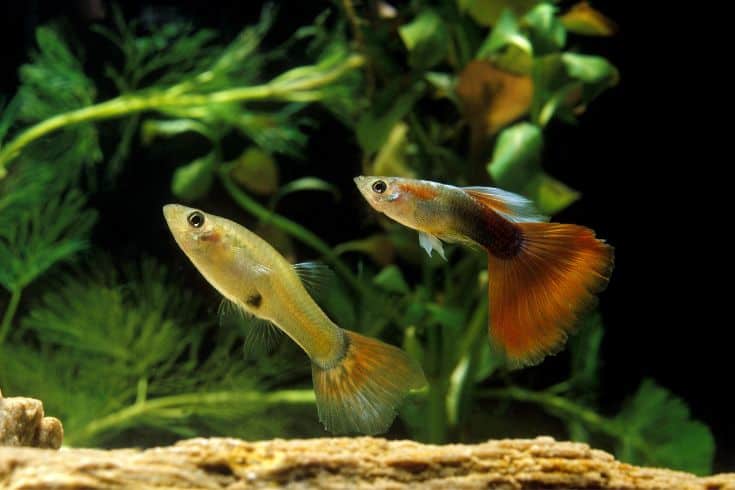
In addition, sometimes, if a fish is diseased or weakened through injury, other guppies will pursue and harass it.
Biting
Guppie can sometimes nip other fish’s fins, although that usually happens in overcrowded tanks where space is at a premium.
Hiding and Avoidance Behaviors
If any of your fish are being bullied, they will probably try to hide away from the aggressor by seeking shelter in caves or thick plants.
I once thought I’d lost one of my rainbowfish since I couldn’t see him when I was feeding my other fish. I was convinced the fish had died and either been eaten by his tank mates or decomposed somewhere hidden in the tank.
Despite hunting high and low, I couldn’t find the fish until one day; I spotted him darting out of his hiding spot under a piece of driftwood surrounded by plants to grab a mouthful of food before rushing back into cover.
It turned out that a particularly belligerent large tiger barb was harassing the juvenile rainbowfish and driving him into hiding.
How To Stop and Prevent Aggression In A Guppy Tank

If you notice aggression and fighting breaking out in your guppy tank, what can you do to stop and prevent it?
Here are a few top tips that are proven to be effective against tank bullies of all species, not only guppies!
Rehome Aggressive Fish
Generally, aggression in a tank is down to one individual with a mean streak. That one guppy can make your other fishes’ lives a misery by constantly nipping, aggressive chasing, and otherwise bullying them. In severe cases, the innocent parties in the tank finish up suffering from severe stress, leading to disease outbreaks and a shortened lifespan.
If you have one especially aggressive fish, the best thing to do is move it to a separate tank or ask your local fish store if they will take the fish off your hands. When an aggressive fish is introduced to a strange setup with different tank mates, the guilty party will often find itself at the bottom of the pecking order, and the bullying will stop.
Alternatively, you could try using a tank divider to keep the aggressive fish away from his tank mates.
Improve The Male-To-Female Ratio
As mentioned earlier in this article, you must have the correct male-to-female ratio of guppies in your tank to keep harassment and chasing to a minimum.
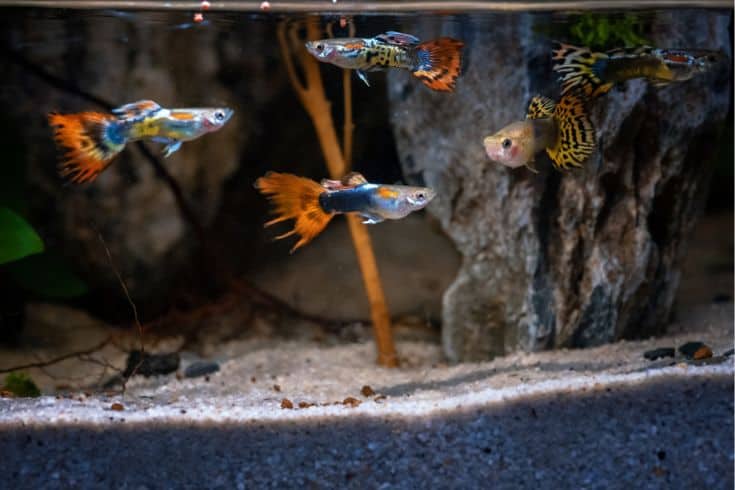
I always keep one male to two or even three female guppies , which works very well. So, if your gender blend is out of line, you need to address that by obtaining a few more of whatever sex is lacking.
Of course, you could opt to keep a male-only guppy tank, although that won’t rule out aggressive behavior completely.
Upsize Your Tank
If your tank is too small, overcrowding can occur, leading to aggressive behavior and bullying.
So, you might need to upsize your aquarium or rehome some of your fish to create more space.
Provide More Hiding Places
Most fish species appreciate somewhere to hide and shelter when they need to get away from their tank mates or avoid the unwanted attentions of would-be suitors, which is often the case with guppies.
I like to use lots of aquatic plants in my tanks, especially floating species that can provide dappled shade from bright aquarium lights and clumps of thick, bushy species where small fish can hide.
Caves and rocky overhangs can make excellent chill-out zones, and upturned terracotta plant pots are handy, too.
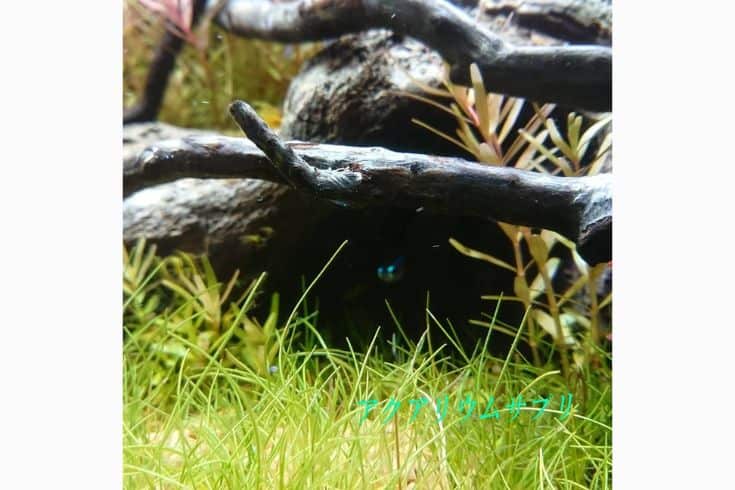
Serve More Food
Hungry fish can become extremely competitive when it comes to feeding times, and a shortage of available food is a common source of belligerence and aggression in fish tanks.
Larger fish push their way to the front of the queue, leaving smaller, weaker tank mates to go hungry. Although guppies are relatively small, they are fast, lively swimmers and can easily outmaneuver slower species at feeding times.
Lack of food is an easy problem to fix; simply increase the amount of food you offer your fish! I give my fish only what they will eat in a couple of minutes, and I watch them to ensure they all get an equal share of the food.
If a feeding frenzy occurs and you’re worried some of your fish are missing out, try using a feeding ring and feed the slower and more feisty species at opposite ends of the tank.
Establish a Dominance Hierarchy Early On
Sometimes, if you add new fish to an existing setup, introducing a group of them all at once often works better than bringing one or two new fish into an existing shoal.
I’ve observed that once a hierarchy is established in a shoal, bringing in individual newcomers can upset that delicate social balance, leading to aggression. So, when buying guppies, I recommend buying a whole group.
FAQs

Here are the answers to a few of the most commonly asked questions about guppy aggression.
Q: Why is a female guppy attacking males?
A: Female guppy harassment is usually associated with mating behavior and often happens when a pregnant female attacks a male that’s chasing her.
Q: Can guppies kill each other?
A: In extreme cases of bullying, it’s quite possible that a guppy can sustain life-threatening injuries that could ultimately kill it.
Q: Will guppies eat other fish?
A: Although guppies don’t typically prey on other fish, they will eat dead ones. So, take care to remove any dead fish from the aquarium before your guppies make a meal of them.
Q: Why are your guppies attacking other fish?
A: There are a few reasons why your guppies could be behaving aggressively toward other fish. The main reason for that behavior is usually overcrowding, causing competition for food. Poor water conditions, injury and sickness, and too few guppies in the community can all cause outbreaks of bullying.
Final Thoughts
Did you enjoy our guide to aggressive guppy behavior? If you did, please remember that sharing is caring, and hit the button above!
Under certain circumstances, guppies can be belligerent toward each other and their tank mates. However, guppies are generally peaceful fish that get along well with their conspecifics and other species.
Do you have guppies in your community setup? Have you noticed any aggressive behavior, and how did you deal with it? Tell us in the comments box below!
